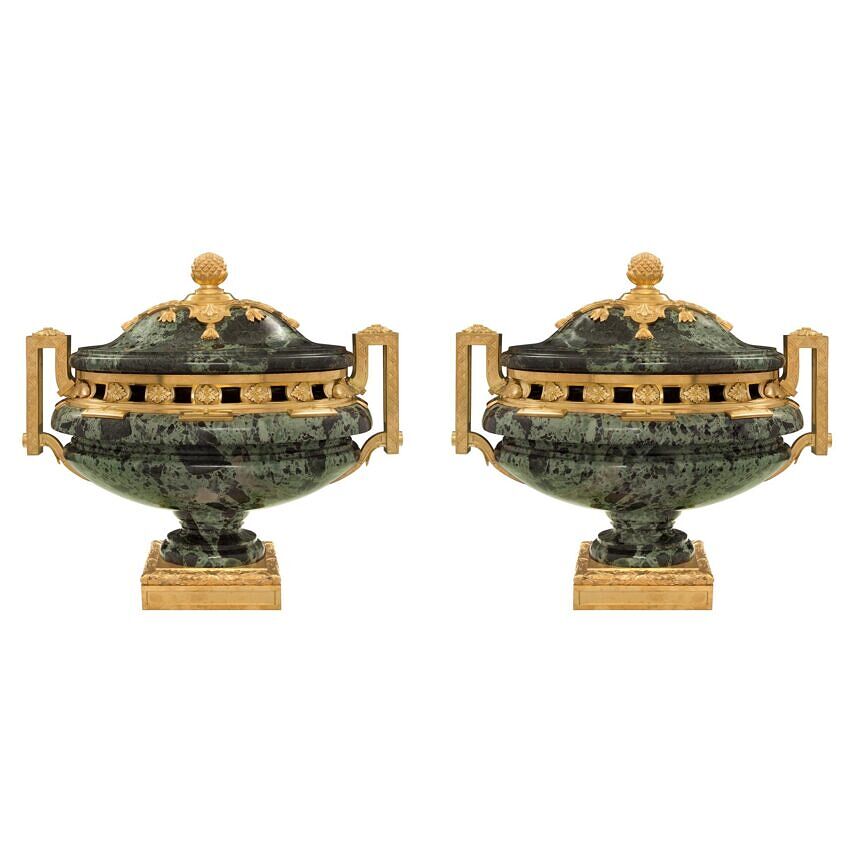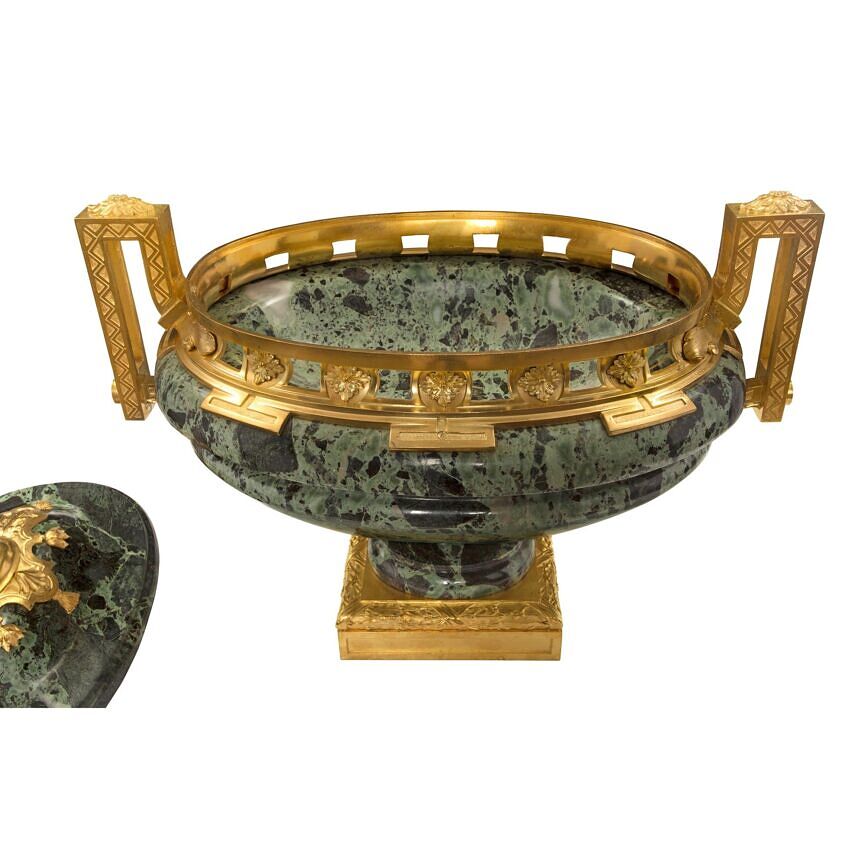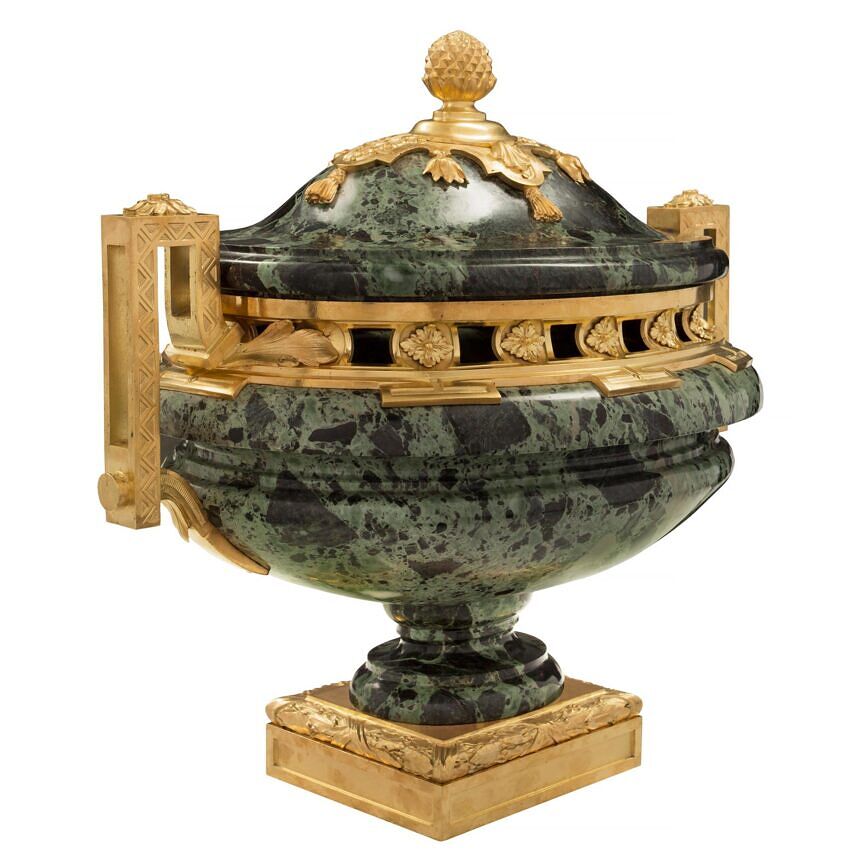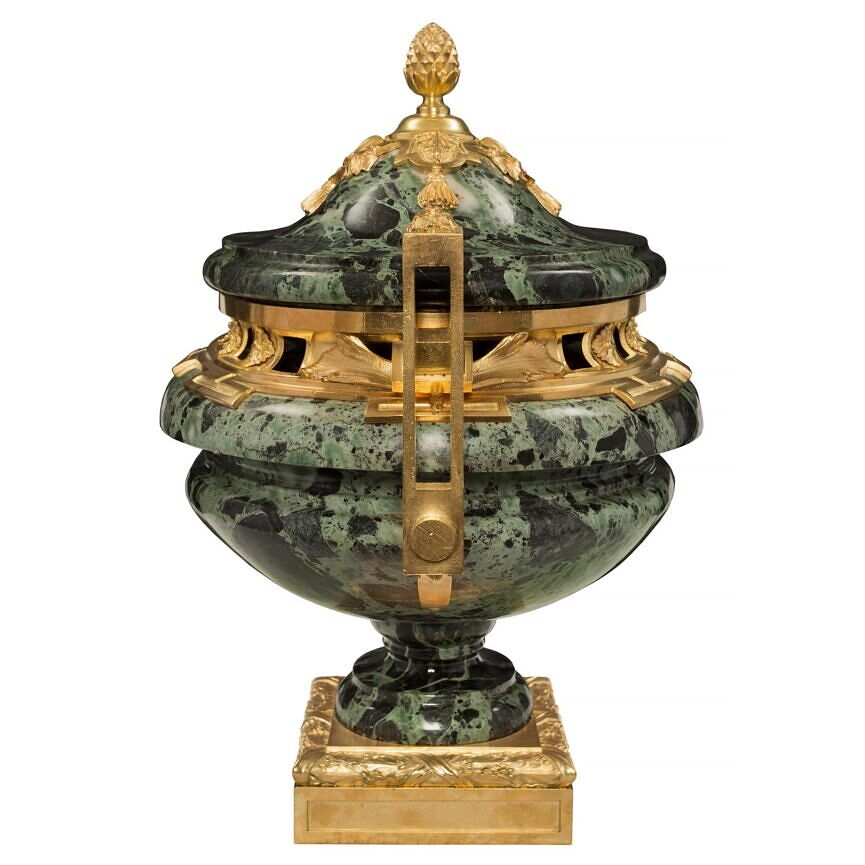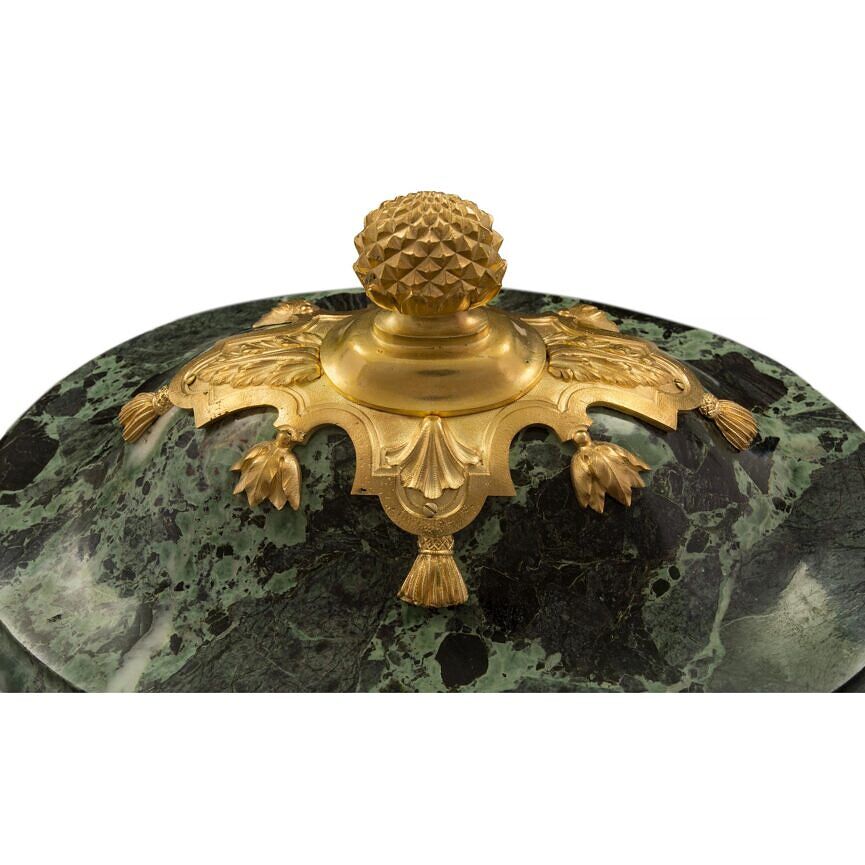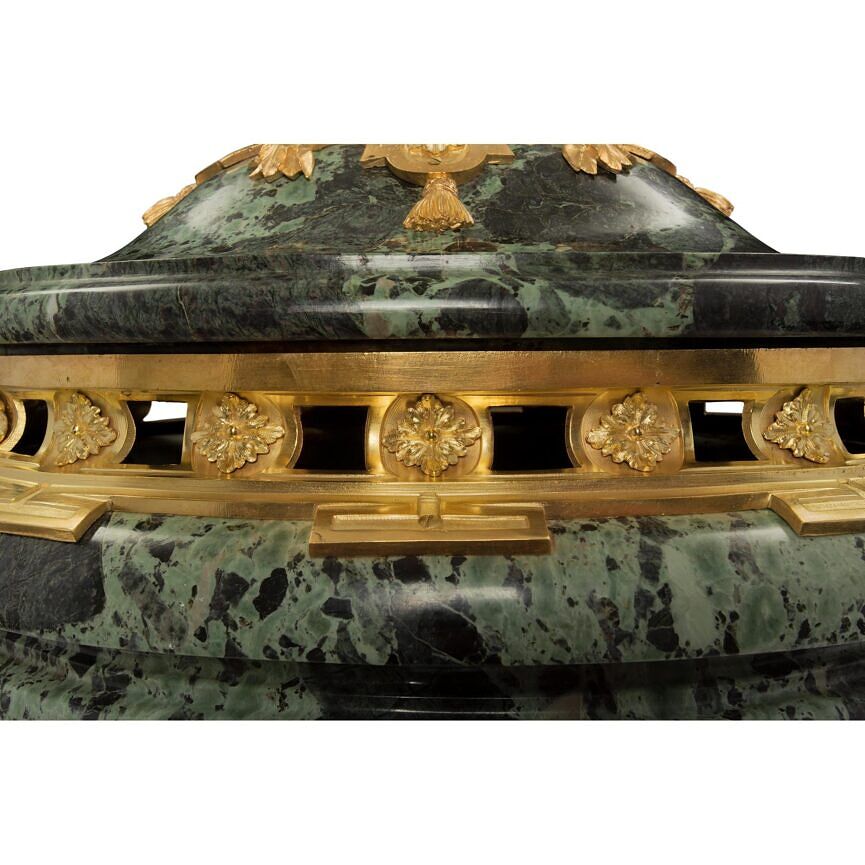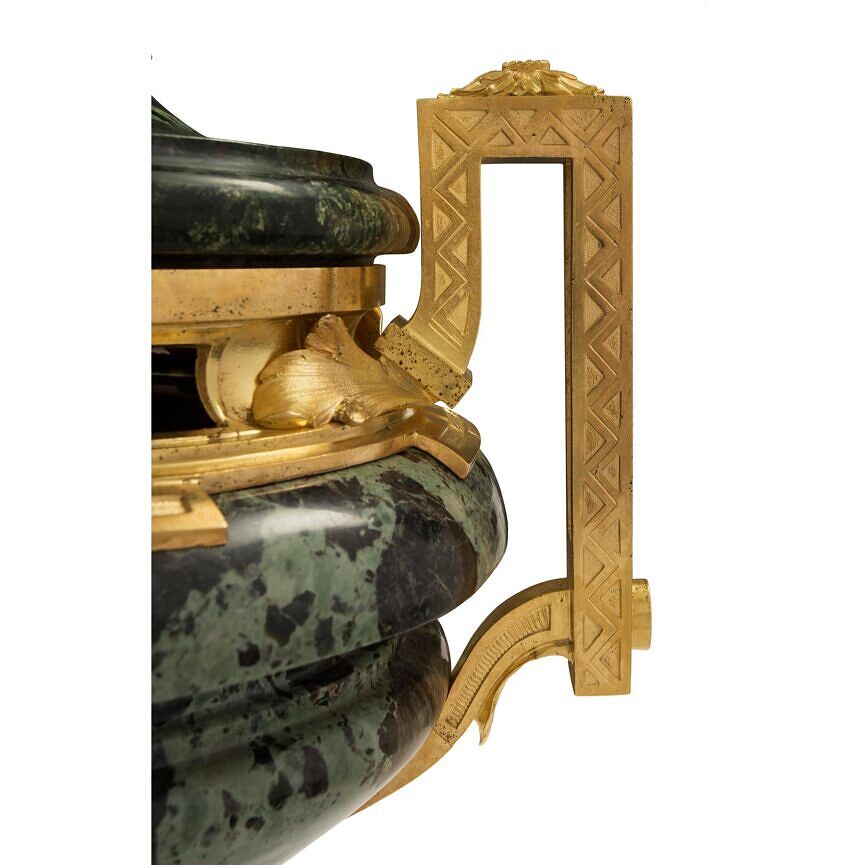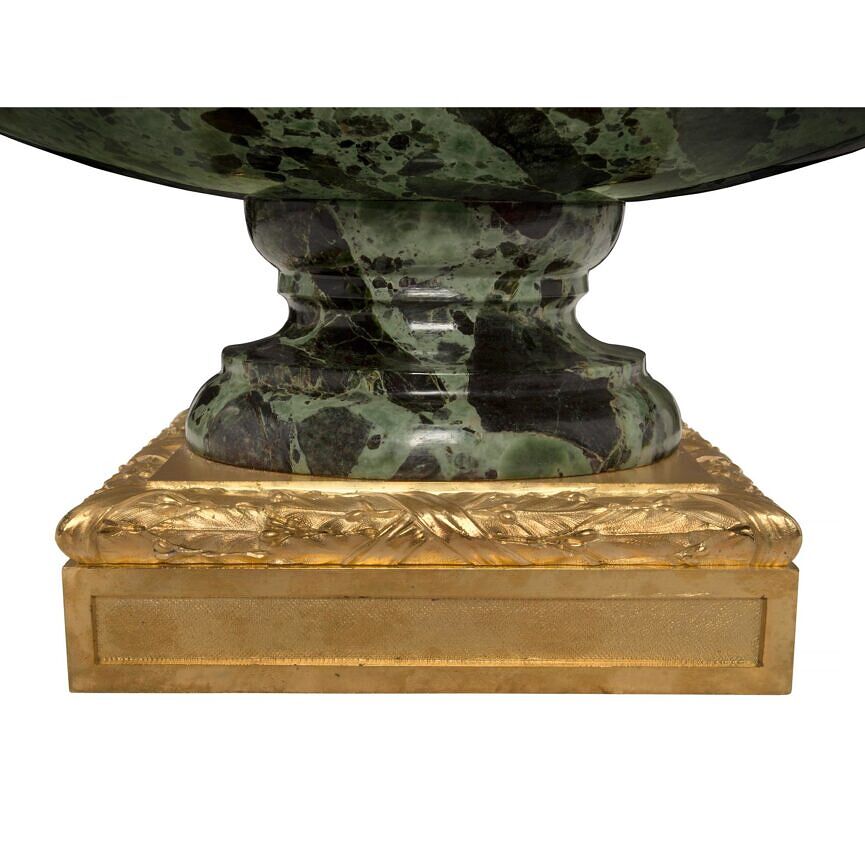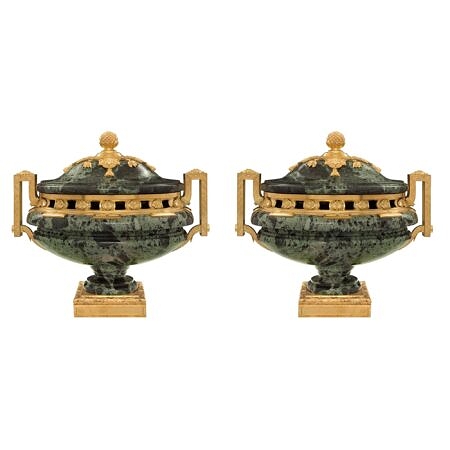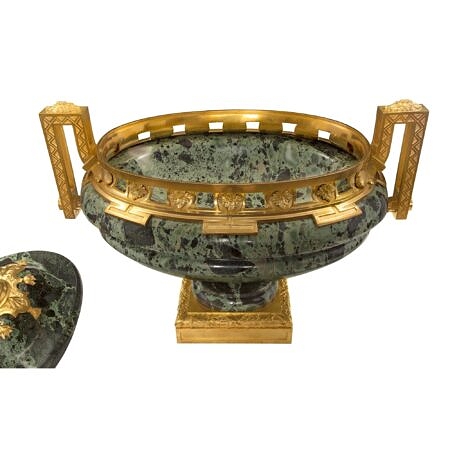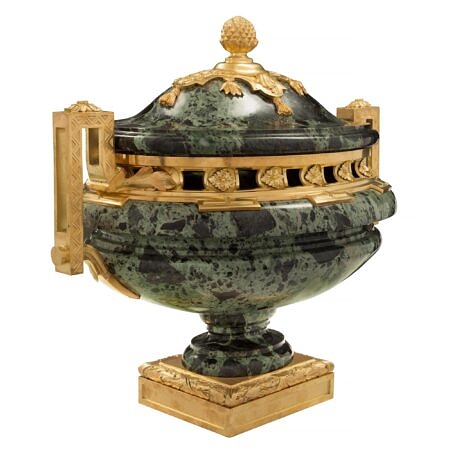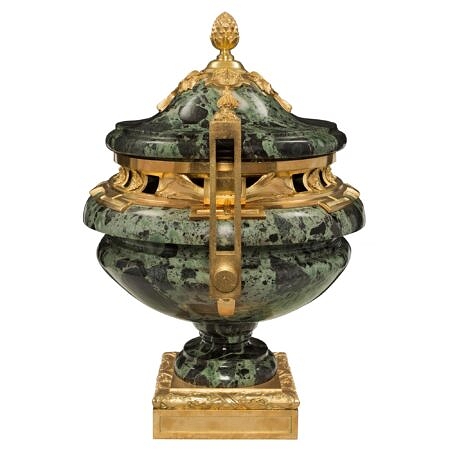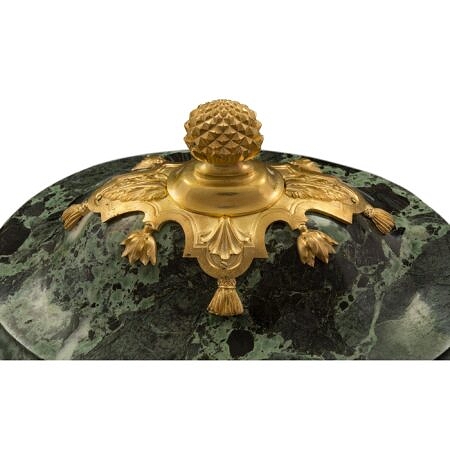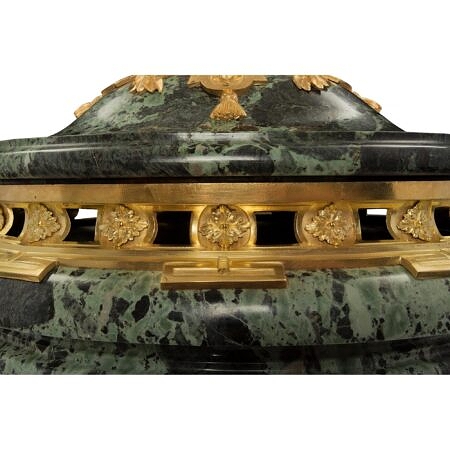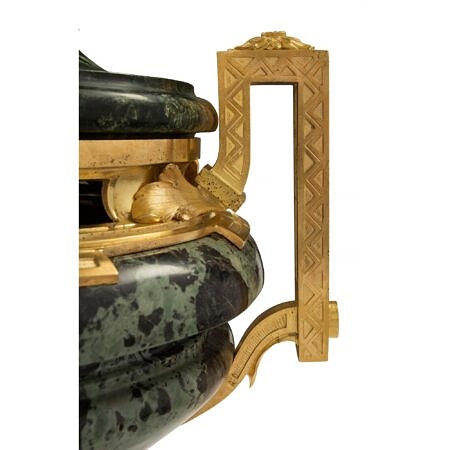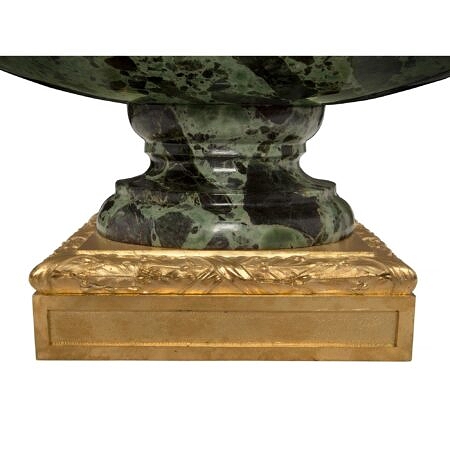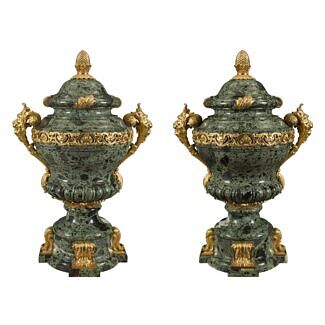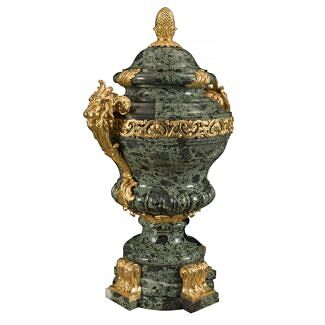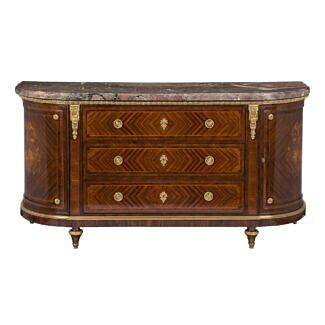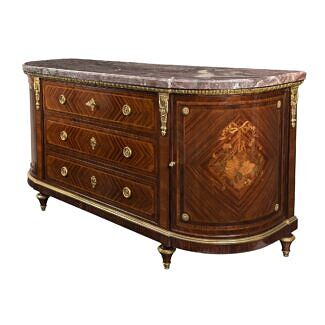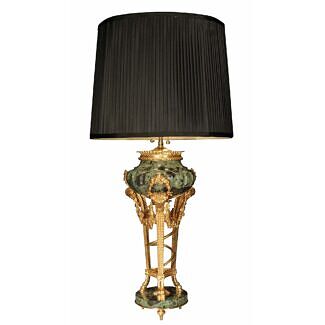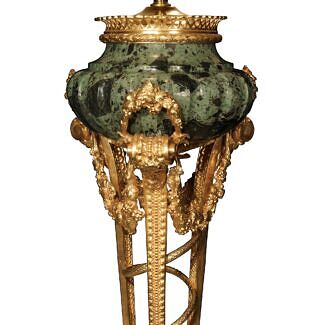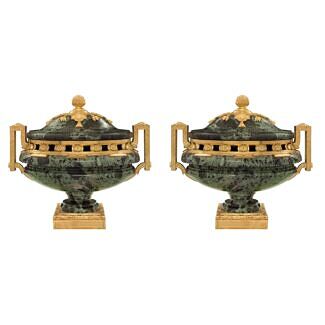French 19th century Louis XVI st. Belle Époque period Vert Antique marble and ormolu urns, attributed to Henry Dasson
Sorry, This item has sold
A sensational and high quality pair of French 19th century Louis XVI st. Belle Époque period Vert Antique marble and ormolu lidded urns, attributed to Henry Dasson. Each stunning urn is raised by a square ormolu base with a recessed... — Read More
A sensational and high quality pair of French 19th century Louis XVI st. Belle Époque period Vert Antique marble and ormolu lidded urns, attributed to Henry Dasson. Each stunning urn is raised by a square ormolu base with a recessed plaque and a fine tied berried laurel band. Above the socle pedestal, the beautifully shaped marble body displays a most decorative and elegant mottled design. At the sides are ormolu Greek key shaped handles with a beautiful and unique pattern on an etched background. At the rim is a richly chased pierced ormolu band with finely detailed floral reserves in a rich satin and burnished finish. The lid displays a striking ormolu acorn finial centered by foliate designs with finely etched details. Wonderful proportions. — Read Less
- Item # 9736
-
H: 15.75 in L: 17.5 in D: 10.75 in
H: 40 cm L: 44 cm D: 27 cm
- France
- 19th Century
- Marble/Stone, Ormolu
- Belle Époque Read More, Louis XV st. Read More
- Henry Dasson Read More
You may also like…
-
# 9729 - H: 32" L: 21" D: 15"
-
# 8245 - H: 35" L: 71" D: 21"


